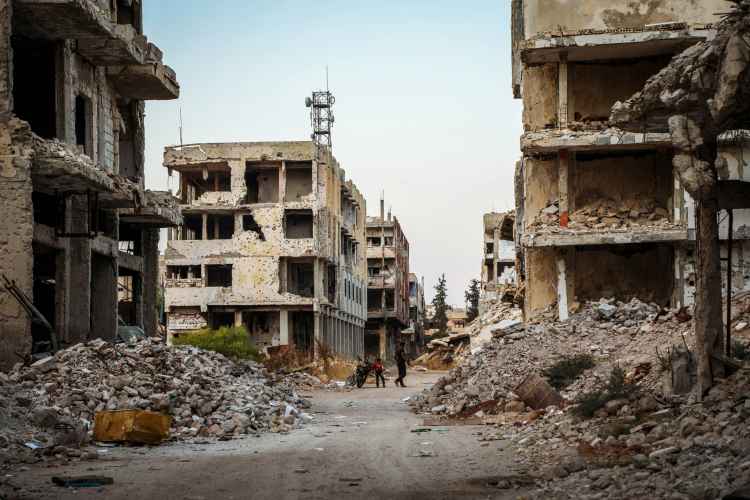
The cost of war, price of peace: Empires have risen and fallen on the soil of West Asia, leaving behind not just monuments and myths, but deep civilisational scars and enduring entanglements. From the Assyrians and Achaemenids to the Rashidun Caliphate and the Ottoman Porte, this is a land that has long served as both crossroads and crucible. Here, sacred geographies have always bled into imperial ambitions. Conquest, in this region, was never merely military—it was also metaphysical, symbolic, and economic.
Through the centuries, the struggle for dominion over these lands has been shaped as much by their spiritual and civilisational resonance as by their geographic and strategic importance. The collapse of the Ottoman Empire did not mark a resolution—it marked a rupture. Imperial withdrawals gave way to externally imposed mandates, brittle borders, and a colonial cartography of discontent. The Balfour Declaration, Sykes-Picot Agreement, and decades of foreign-backed interventions further etched fault lines that remain unresolved.
READ | Satellite data reshaping agriculture, rural credit
The twentieth century did not untangle these legacies—it merely replaced empires with alliances and Cold War theatres. Today, even as warfare dons the garb of modern technology, the region remains trapped in a choreography of proxy conflicts and contested sovereignties. The players change, but the script rarely does.
War moves markets, shapes monetary policy
Europe’s own trajectory is no less entangled with the consequences of war. The Napoleonic wars, the Treaty of Versailles, the cataclysms of two world wars, and the long frozen tensions of the Iron Curtain form the continent’s inherited memory. The post-Cold War period, once heralded as the long peace, now appears a brief interlude. Russia’s invasion of Ukraine has shattered the illusions of a pacified continent and exposed the vulnerability of a system that presumed that economic interdependence would soften old animosities. As trenches re-emerge in Eastern Europe, the ghosts of imperial nostalgia and strategic insecurity have returned to haunt a supposedly post-historical order.
In South Asia, the echoes of conflict are carried not only by the legacies of partition and insurgency, but by the region’s deep entwinement with the Middle East. Gulf economies have long served as a source of both labour mobility and remittance capital. Any disruption in West Asian stability reverberates in the bylanes of Kerala, the marketplaces of Dhaka, and the hinterlands of Punjab. And while the region has escaped the scale of direct warfare seen elsewhere, its economic exposure to global shocks renders its peace permanently precarious.
The price of conflict is no longer measured in death tolls and territorial shifts alone. It is now denominated in inflation data, interest rate decisions, disrupted trade corridors, and depreciating currencies. When tankers stall in the Strait of Hormuz, central bankers in Accra and Colombo feel the tremors. When grain exports halt in the Black Sea, it is not only Europe’s food security that suffers. The children of Tunisia, Lebanon and Yemen find their school meals more meagre, their futures more uncertain. Conflict today travels faster than contagion and strikes deeper than sanctions.
But the economic scaffolding of war has also evolved. It is no longer built solely on defence budgets and battlefield logistics. It extends into the stock exchanges of New York and Frankfurt, the boardrooms of venture funds, and the innovation pipelines of military-grade startups. The military-industrial complex is no longer a monolithic state apparatus—it has become a transnational ecosystem.
Artificial intelligence firms with defence applications, cybersecurity outfits that serve both governments and mercenaries, drone manufacturers operating in legal grey zones, and hedge funds that profit from volatility have all become part of this architecture. Military expenditure is now both policy response and commercial opportunity. The surge in US defence stocks following Middle Eastern escalations, the boom in European arms exports to Ukraine, and the proliferation of drone deals across Asia are not simply responses to insecurity—they are manifestations of it being monetised. Conflict is priced in even before it is condemned.
Business of instability
More insidiously, conflict reshapes global capital flows. In times of volatility, capital doesn’t seek growth—it seeks refuge. Safe-haven assets, largely in dominant-currency economies aligned with major military powers, attract capital outflows from fragile markets. This flight to safety is far from neutral. It leaves already strained economies with dwindling reserves, currency depreciation, and soaring risk premiums. For many South Asian countries, monetary policy becomes a tool of triage, not stimulus. The result: more expensive debt, slower growth, and prolonged recovery.
Meanwhile, the politics of currency is becoming a battlefield of its own. The weaponisation of the dollar through sanctions, trade restrictions, and SWIFT exclusions has catalysed attempts to build alternative settlement systems. Bilateral rupee-rouble and yuan-riyal arrangements, as well as broader conversations within BRICS, all reflect a world trying to rewire its financial plumbing in the hope of reducing exposure to Western fiat dominance.
Yet these efforts remain fragmented and lack the trust architecture that makes a reserve currency truly global. For a country like India, whose interests stretch across both the Western order and emergent non-Western coalitions, the challenge is not just political alignment but economic redesign. Strategic autonomy in the twenty-first century must be engineered as much in clearing mechanisms and commodity baskets as in diplomatic posture.
Conflict also distorts commodity cycles in ways that linger far beyond armistices. The war in Ukraine has disrupted not only wheat and maize exports, but fertiliser flows, energy transit corridors, and rare earth extraction. The cost of war, therefore, includes the cost of planting rice in Bihar, powering hospitals in Kathmandu, and fuelling buses in Dhaka. Price volatility forces states to choose between subsidising survival and investing in development. The longer the conflict, the deeper the erosion of fiscal space. The social fabric frays not only due to violence, but from the quiet desperation of economic insecurity.
Can a world that rewards volatility ever truly invest in stability? What becomes of global governance when peace is no longer profitable and neutrality no longer affordable? Are we willing to interrogate not only the actors who initiate war but the structures that sustain its perpetuation? How many economies must falter before we acknowledge that the business of war extends far beyond the battlefield? And in our pursuit of strategic alignment and fiscal resilience, have we forgotten to ask whose suffering becomes the collateral cost of our indifference?
It is no longer tenable to think of war as a discrete event. It is a systemic risk, a transmissible economic pathogen. It infects growth forecasts, destabilises supply chains, and fractures both domestic and international political consensus. Countries may remain militarily neutral, but economically no one remains untouched. The indirect costs often exceed the visible ones, and the nations least responsible for the outbreak of hostilities find themselves bearing the heaviest burdens.
The cost of war
The central question facing the international system today is whether it can evolve the financial, trade and energy architecture needed to treat peace as an economic asset rather than a diplomatic afterthought. Until then, global markets will continue to reward those who profit from instability, and punish those who are merely proximate to its consequences.
Structural reform will be essential, but it cannot be abstract. The Global South, particularly regions such as South Asia, must move from rhetorical inclusion to genuine influence. Without voice, there is no trust. And without trust, no architecture—however well designed—can endure the turbulence ahead. Peace will not arrive through summits alone. It will require a realignment of economic incentives, a dismantling of vested interest structures, and a moral imagination that sees war not as theatre, but as theft.
We must not only ask who starts wars, but who profits from their persistence. The harsh truth is that we are not merely witnessing war—we are financing it. Peace will not emerge from summits alone. It will require dismantling vested interests, realigning incentives, and imagining war not as spectacle, but as theft—of futures, of security, of dignity.
The central question for our time is no longer whether the world can end war. It is whether we can stop underwriting it.
Srinath Sridharan is a strategic counsel with 25 years experience with leading corporates across diverse sectors including automobiles, e-commerce, advertising and financial services. He understands and ideates on intersection of finance, digital, contextual-finance, consumer, mobility, Urban transformation, and ESG. Actively engaged across growth policy conversations and public policy issues.

